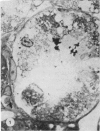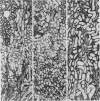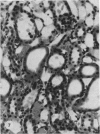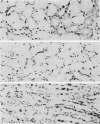Abstract
Regeneration of the renal tubules in rats, after death of the cells of the pars recta caused by a dose of 1.5 mg HgCl2/kg, was examined by histological and radioautographic methods. The tubules regenerated from surviving squamoid cells at both ends of the necrotic segments, which often appeared to arise from epithelial cells that had cast off superficial "dead cytoplasm" to leave the basal parts containing the nucleus in a rim of cytoplasm. The tubular epithelium was reconstituted between the 2nd and 5th days by proliferation and sliding extension of the squamoid cells along the tubules and predominantly from the distal end of the necrotic segments where the cell proliferation was extremely active. Inflammation in reaction to the dead cells was insignificant. Although the majority of tubules regenerated in a regular fashion some degree of anomalous epithelial proliferation occurred in patches, predominantly in the junctional area between the pars recta and the loops of Henle and perhaps most frequently in reference to those nephrons with superficial and mid-cortical glomeruli. The exuberant proliferation led to scattered epithelial growths projecting into the lumen of the tubules, and there was evidence that these obstructed the discharge of necrotic debris. Tubular collapse and atrophy leading to the formation of small scars followed, more often affecting the short looped nephrons.
Full text
PDF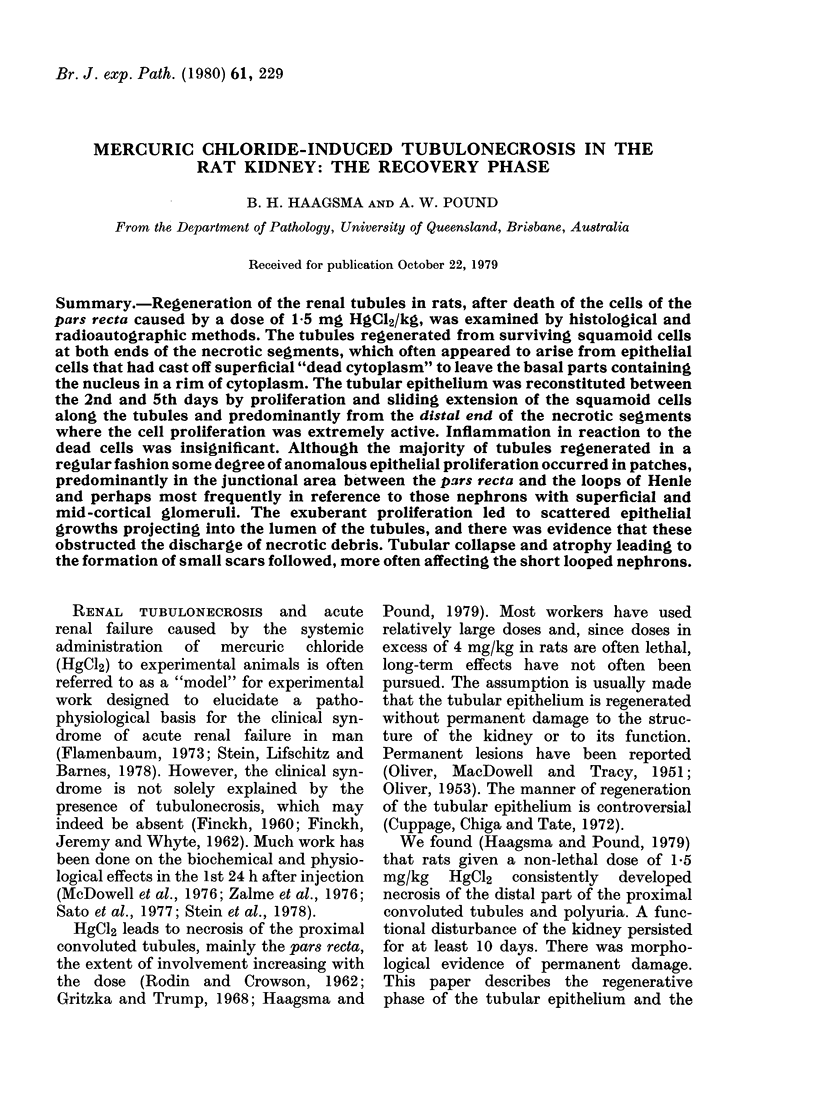
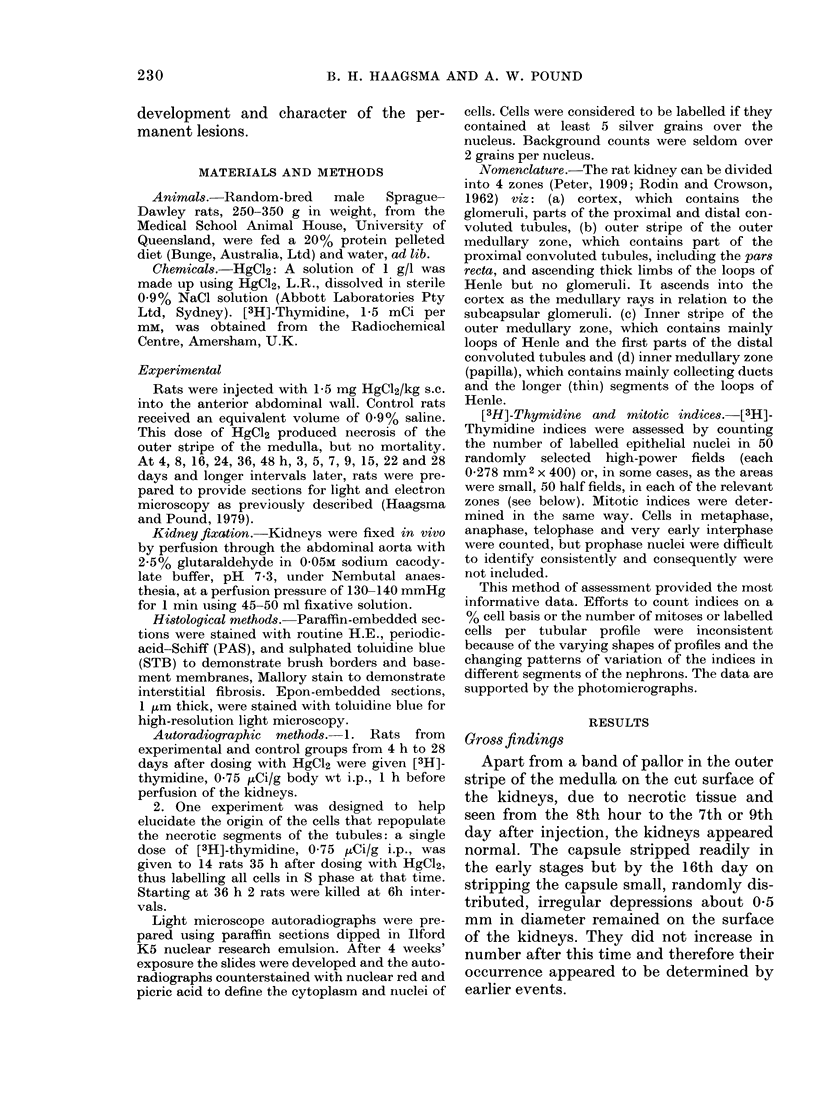
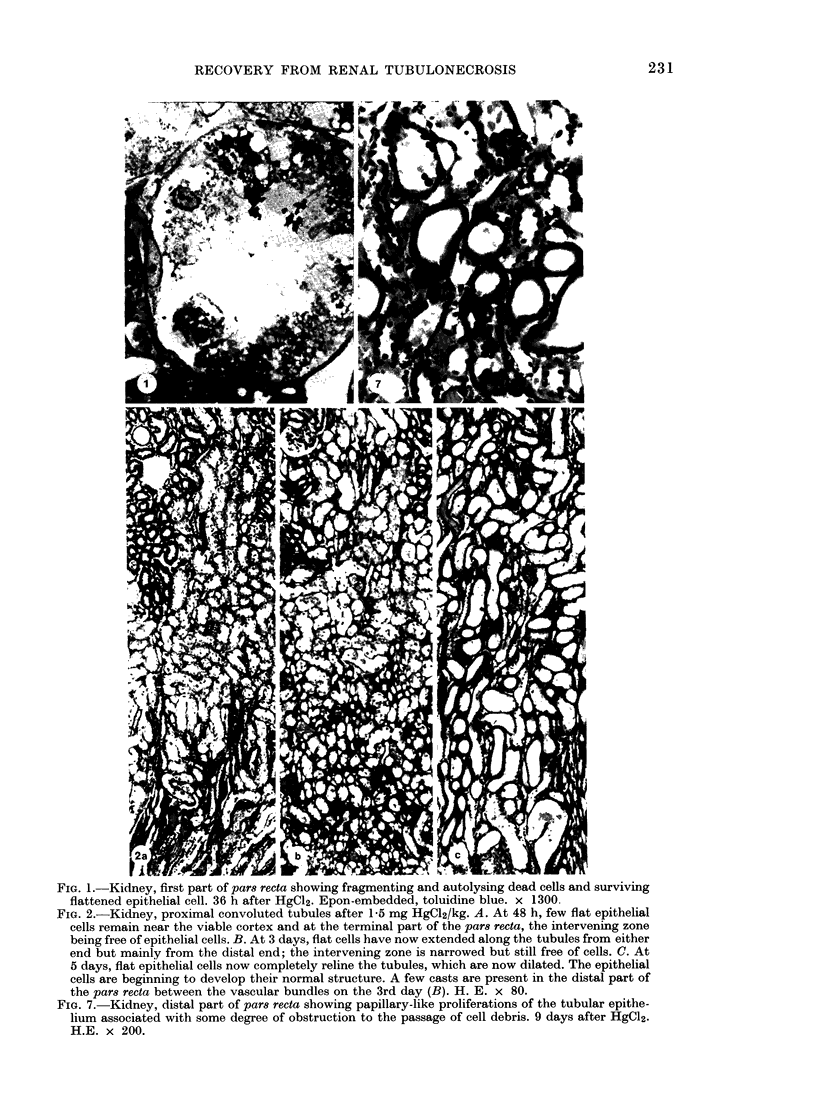
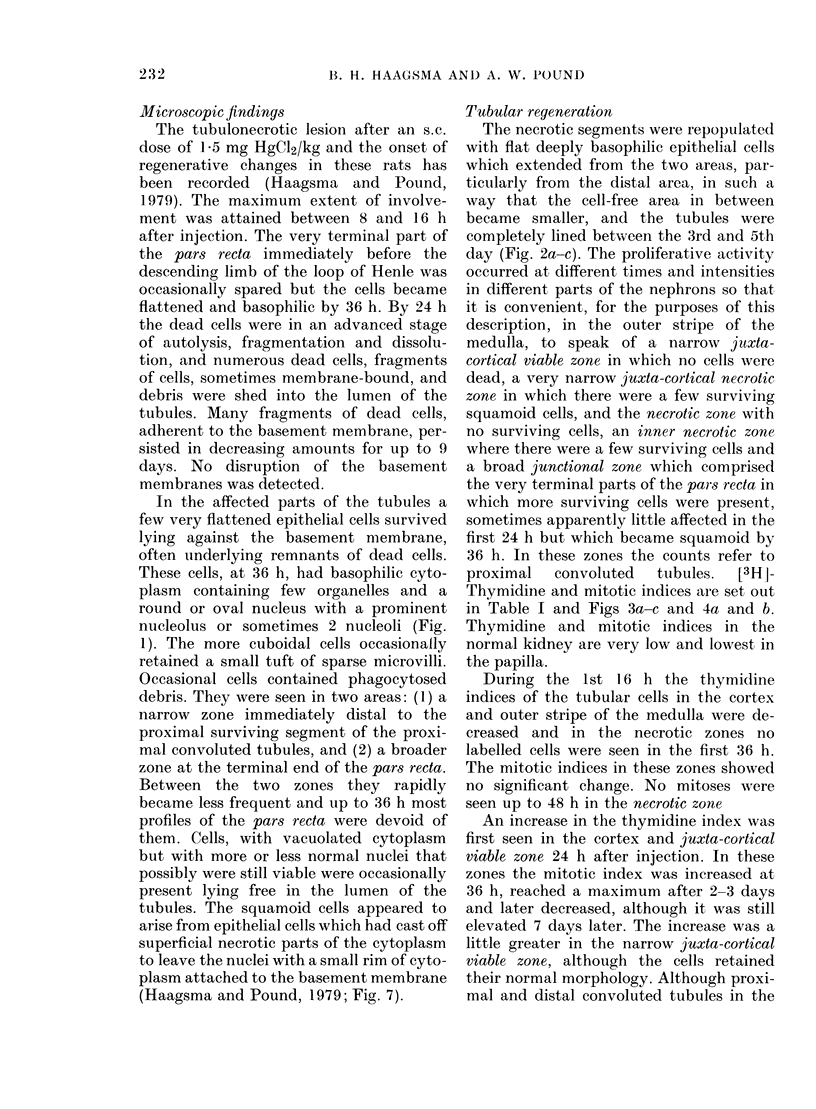
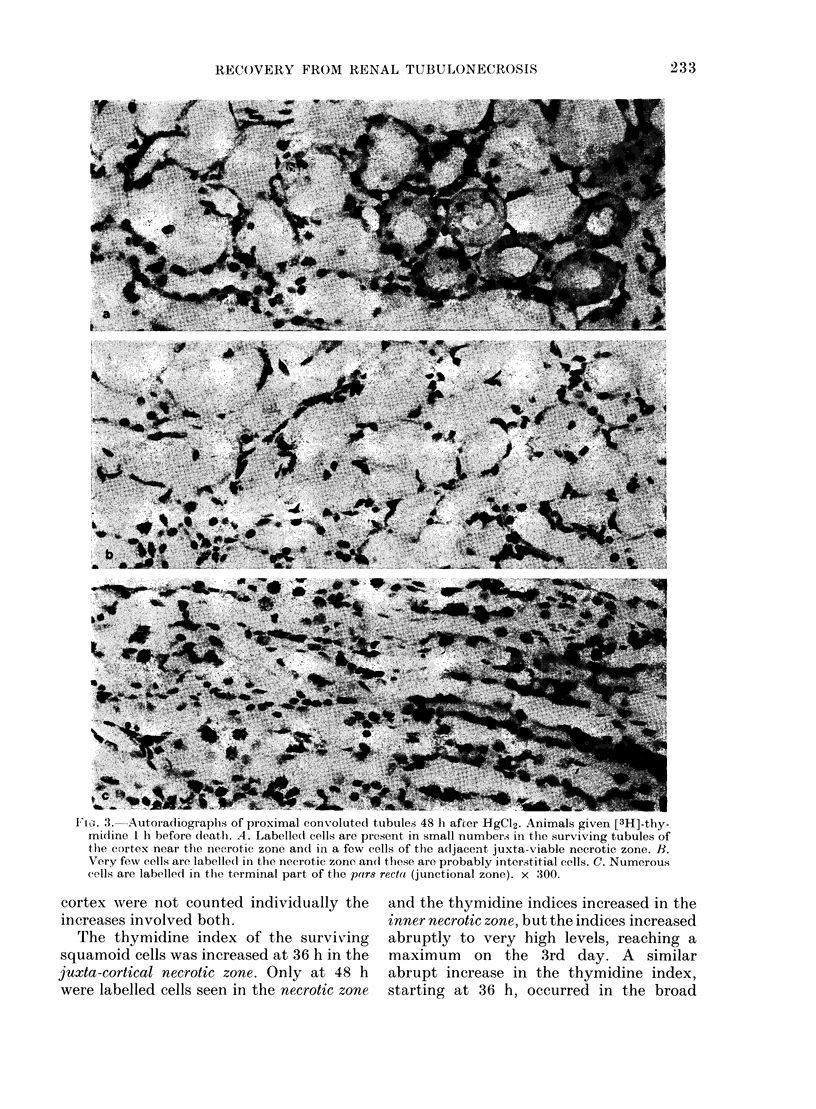
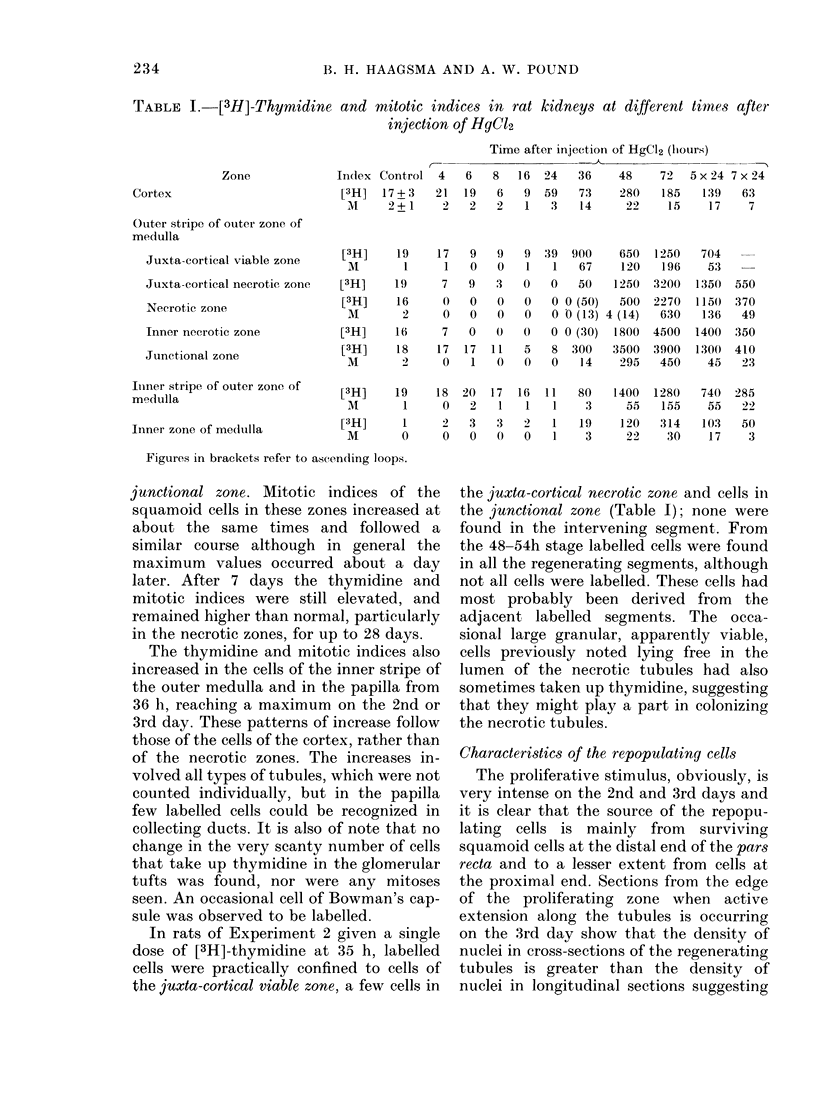
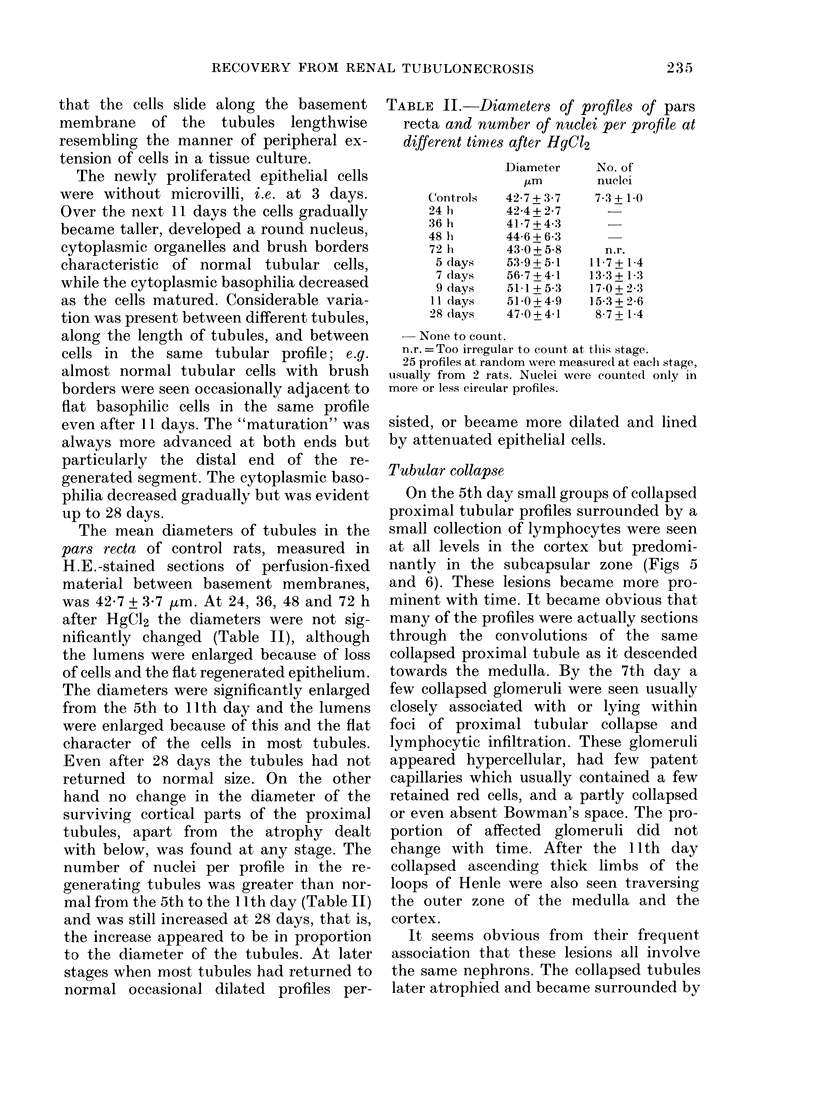
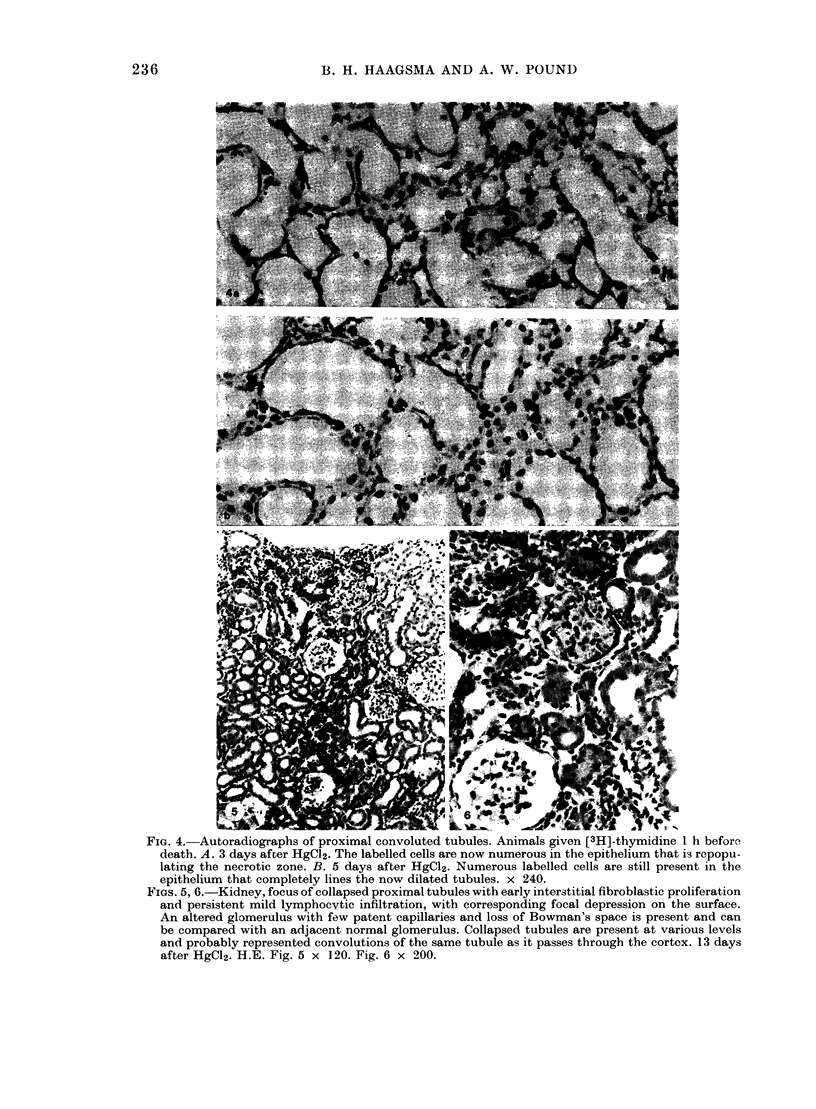
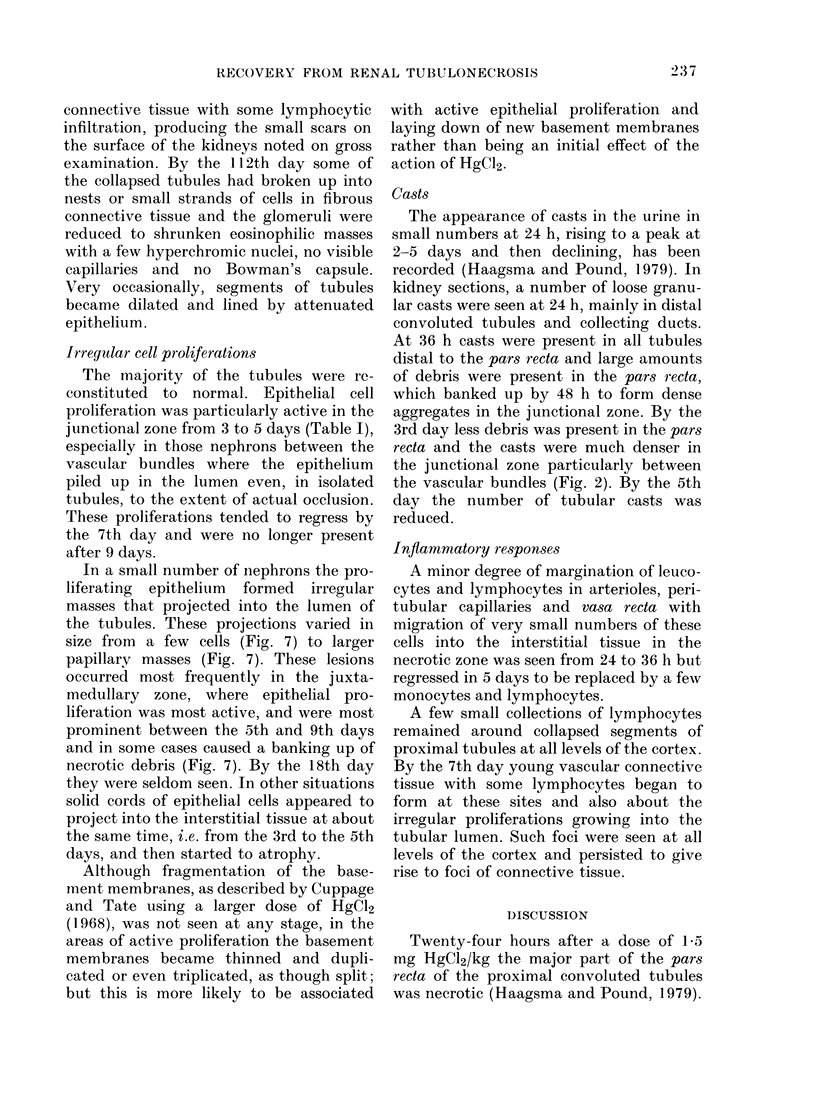

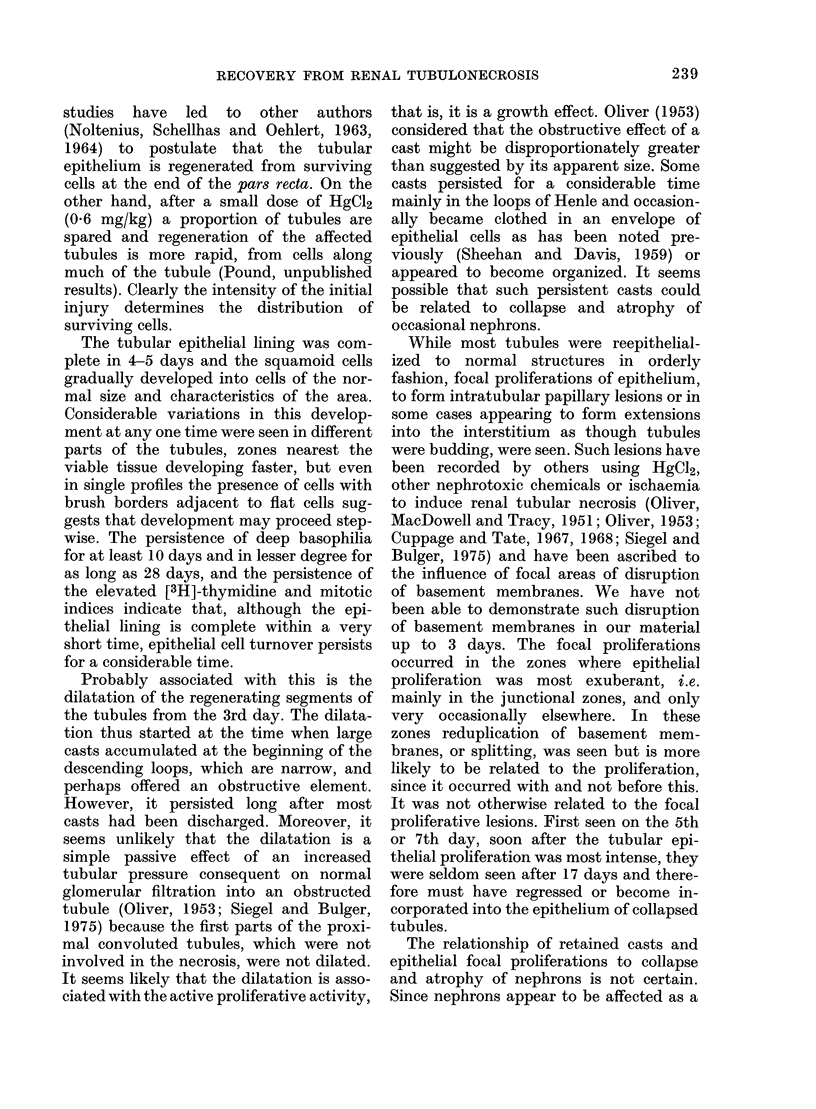
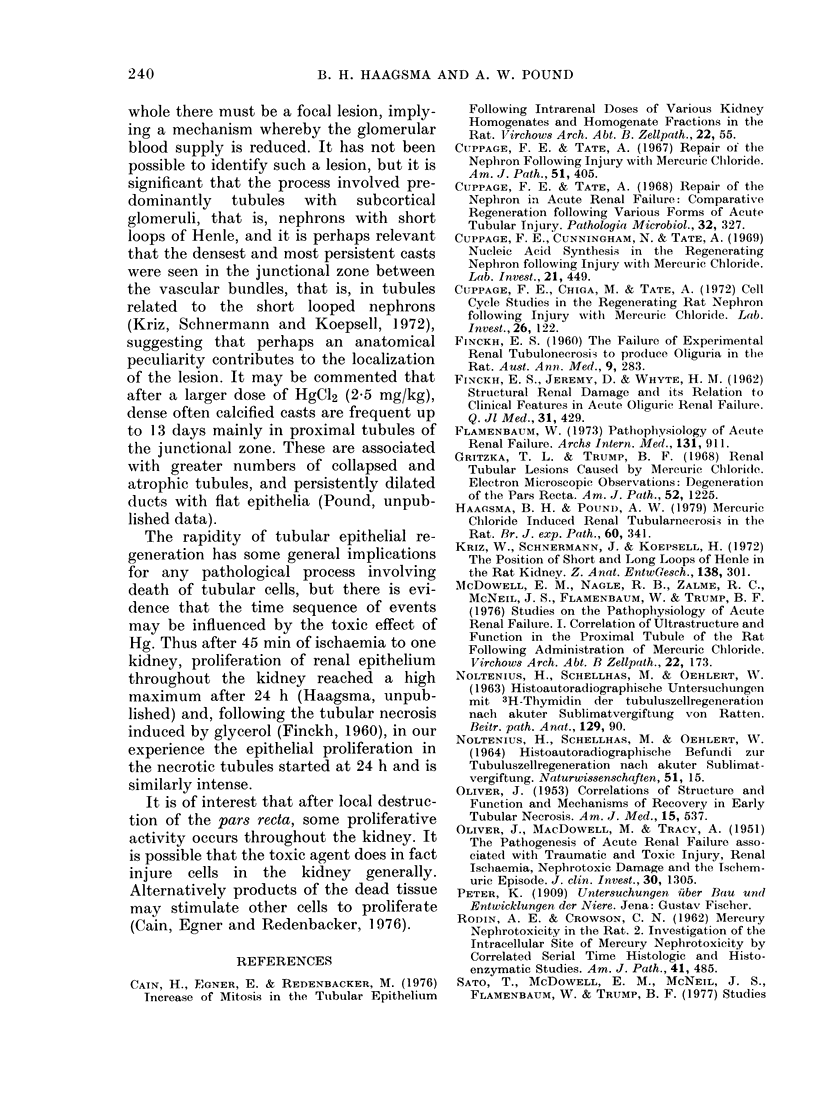
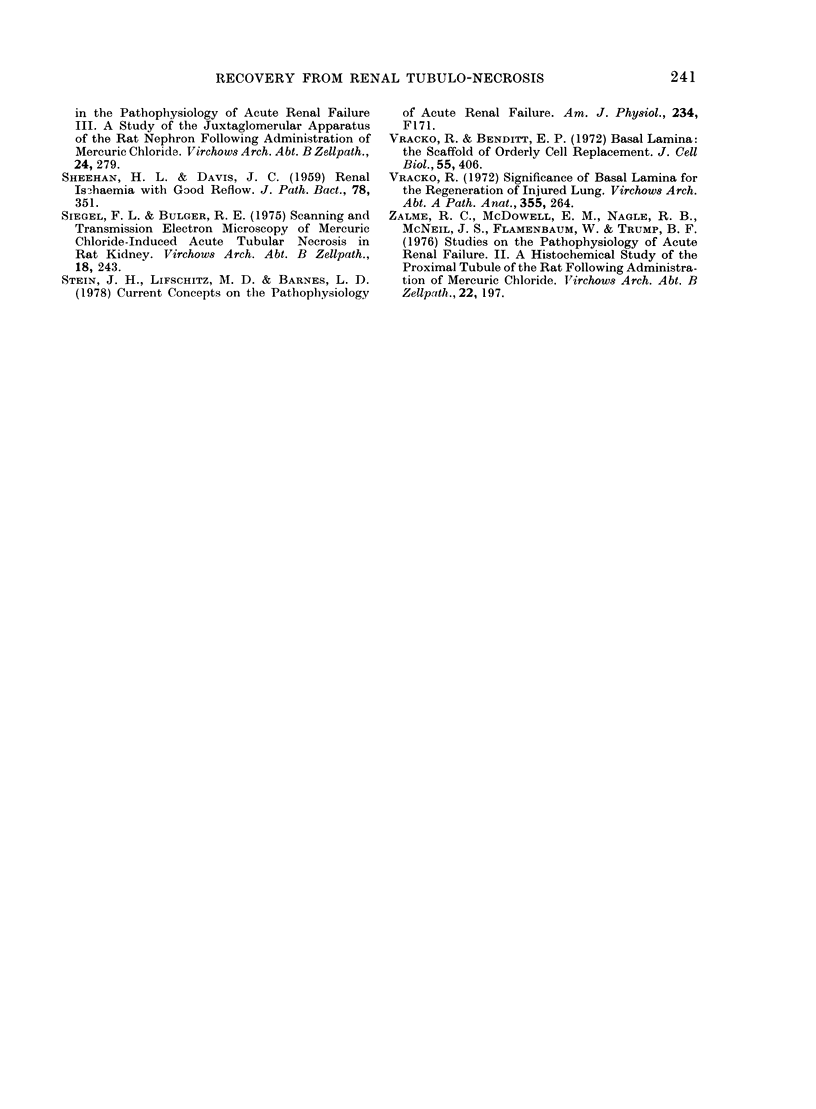
Images in this article
Selected References
These references are in PubMed. This may not be the complete list of references from this article.
- Cuppage F. E., Chiga M., Tate A. Cell cycle studies in the regenerating rat nephron following injury with mercuric chloride. Lab Invest. 1972 Jan;26(1):122–126. [PubMed] [Google Scholar]
- Cuppage F. E., Cunningham N., Tate A. Nucleic acid synthesis in the regenerating nephron following injury with mercuric chloride. Lab Invest. 1969 Nov;21(5):449–457. [PubMed] [Google Scholar]
- Cuppage F. E., Tate A. Repair of the nephron following injury with mercuric chloride. Am J Pathol. 1967 Sep;51(3):405–429. [PMC free article] [PubMed] [Google Scholar]
- Cuppage F. E., Tate A. Repair of the nephron in acute renal failure: comparative regeneration following various forms of acute tubular injury. Pathol Microbiol (Basel) 1968;32(6):327–344. doi: 10.1159/000162075. [DOI] [PubMed] [Google Scholar]
- FINCKH E. S., JEREMY D., WHYTE H. M. Structural renal damage and its relatin to clinical features in acute oliguric renal failure. Q J Med. 1962 Oct;31:429–446. [PubMed] [Google Scholar]
- FINCKH E. S. The failure of experimental renal tubulonecrosis to produce oliguria in the rat. Australas Ann Med. 1960 Nov;9:283–288. doi: 10.1111/imj.1960.9.4.283. [DOI] [PubMed] [Google Scholar]
- Gritzka T. L., Trump B. F. Renal tubular lesions caused by mercuric chloride. Electron microscopic observations: degeneration of the pars recta. Am J Pathol. 1968 Jun;52(6):1225–1277. [PMC free article] [PubMed] [Google Scholar]
- Kriz W., Schnermann J., Koepsell H. The position of short and long loops of Henle in the rat kidney. Z Anat Entwicklungsgesch. 1972;138(3):301–319. doi: 10.1007/BF00520710. [DOI] [PubMed] [Google Scholar]
- McDowell E. M., Nagle R. B., Zalme R. C., McNeil J. S., Flamenbaum W., Trump B. F. Studies on the pathophysiology of acute renal failure. I. Correlation of ultrastructure and function in the proximal tubule of the rat following administration of mercuric chloride. Virchows Arch B Cell Pathol. 1976 Nov 24;22(3):173–196. doi: 10.1007/BF02889215. [DOI] [PubMed] [Google Scholar]
- NOLTENIUS H., SCHELLHAS H., OEHLERT W. HISTOAUTORADIOGRAPHISCHE UNTERSUCHUNGEN MIT 3H-THYMIDIN DER TUBULUSZELLREGENERATION NACH AKUTER SUBLIMATVERGIFTUNG VON RATTEN. Beitr Pathol Anat. 1963 Dec;129:90–117. [PubMed] [Google Scholar]
- RODIN A. E., CROWSON C. N. Mercury nephrotoxicity in the rat. 2. Investigation of the intracellular site of mercury nephrotoxicity by correlated serial time histologic and histoenzymatic studies. Am J Pathol. 1962 Oct;41:485–499. [PMC free article] [PubMed] [Google Scholar]
- SHEEHAN H. L., DAVIS J. C. Renal ischaemia with good reflow. J Pathol Bacteriol. 1959 Oct;78:351–377. doi: 10.1002/path.1700780204. [DOI] [PubMed] [Google Scholar]
- Sato T., McDowell E. M., McNeil J. S., Flamenbaum W., Trump B. F. Studies on the pathophysiology of acute renal failure. III. A study of the juxtaglomerular apparatus of the rat nephron following administration of mercuric chloride. Virchows Arch B Cell Pathol. 1977 Sep 15;24(4):279–293. doi: 10.1007/BF02889286. [DOI] [PubMed] [Google Scholar]
- Siegel F. L., Bulger R. E. Scanning and transmission electron microscopy of mercuric chloride-induced acute tubular necrosis in rat kidney. Virchows Arch B Cell Pathol. 1975 Jul 18;18(3):243–262. doi: 10.1007/BF02889251. [DOI] [PubMed] [Google Scholar]
- Stein J. H., Lifschitz M. D., Barnes L. D. Current concepts on the pathophysiology of acute renal failure. Am J Physiol. 1978 Mar;234(3):F171–F181. doi: 10.1152/ajprenal.1978.234.3.F171. [DOI] [PubMed] [Google Scholar]
- Vracko R., Benditt E. P. Basal lamina: the scaffold for orderly cell replacement. Observations on regeneration of injured skeletal muscle fibers and capillaries. J Cell Biol. 1972 Nov;55(2):406–419. doi: 10.1083/jcb.55.2.406. [DOI] [PMC free article] [PubMed] [Google Scholar]
- Vracko R. Significance of basal lamina for regeneration of injured lung. Virchows Arch A Pathol Pathol Anat. 1972;355(3):264–274. doi: 10.1007/BF00551062. [DOI] [PubMed] [Google Scholar]
- Zalme R. C., McDowell E. M., Nagle R. B., McNeil J. S., Flamenbaum W., Trump B. F. Studies on the pathophysiology of acute renal failure. II. A histochemical study of the proximal tubule of the rat following administration of mercuric chloride. Virchows Arch B Cell Pathol. 1976 Nov 24;22(3):197–216. doi: 10.1007/BF02889216. [DOI] [PubMed] [Google Scholar]



